The largest city on Japan's northernmost island of Hokkaido, Sapporo offers many great reasons to visit. Although travel to this largely hilly region only became fashionable after it hosted the 1972 Winter Olympics, the city is more than making up for it now with events such as the famousSapporo Snow Festival, one of Japan's largest winter events attracting more than two million visitors every winter (the city's year-round tally of visitors now surpasses 14 million). In addition, the city regularly hosts important international sporting events as well as major political gatherings such as G8 Summits. Sapporo also plays a role as a major cultural destination and is home to some of Japan's best-known culinary dishes, theatrical and musical events, as well as museums and lovely parks well worth including on your Japanese itinerary.
1 Odori Avenue Park
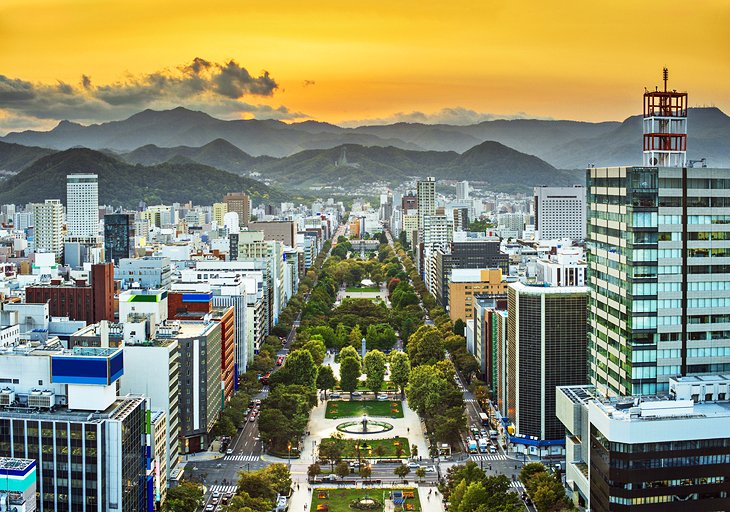
In Sapporo's downtown core, Odori Avenue Park is an oasis of green that slices through the city. It stands in stark contrast to the high rises and offices around it and serves as the best place from which to begin exploring this dynamic destination. Not unlike the many broad avenues typical of European cities like Paris, this delightfully wide one-and-a-half-kilometer-long stretch of park with its open space and gardens, fountains and art sculptures connects many of the city's most interesting attractions such as the Sapporo TV Tower and various museums and galleries, as well as shopping and entertainment districts. It also serves as an important venue for cultural events, including the springSapporo Lilac Festival and the always-popular Sapporo Snow Festival. Odori Avenue Park is close to the underground shopping area and business district of Sapporo.
Accommodation: Where to Stay in Sapporo- TripAdvisor.com
2 Hokkaidō Shrine
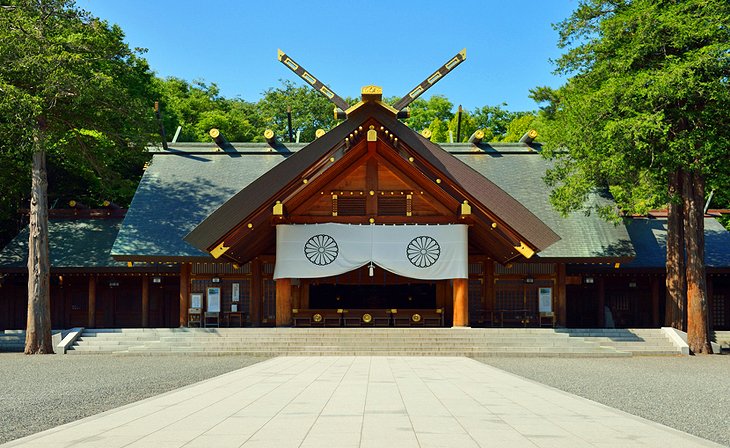
Built in 1871, the Hokkaidō Shrine (Hokkaidō Jingū) is one of the country's most important (and visited) Shinto religious sites. Adjacent to Maruyama Park, the shrine became even more important after it was dedicated to the soul of much revered Emperor Meiji in 1964. The site is massive, and in addition to the huge temple building, it consists of a large garden replete with cherry blossoms, a big draw when in bloom each spring. Another favorite time to visit is New Year's when special celebrations and festivities are conducted, or during the annual Sapporo Festival every June when long parades of traditionally dressed revelers visit the Hokkaidō Shrine and pay homage to their ancestors and the spirits of the country's most revered religious leaders.
Address: 474 Miyagaoka, Chuo-ku, Sapporo, Hokkaido
3 Mount Moiwa and the Aerial Ropeway
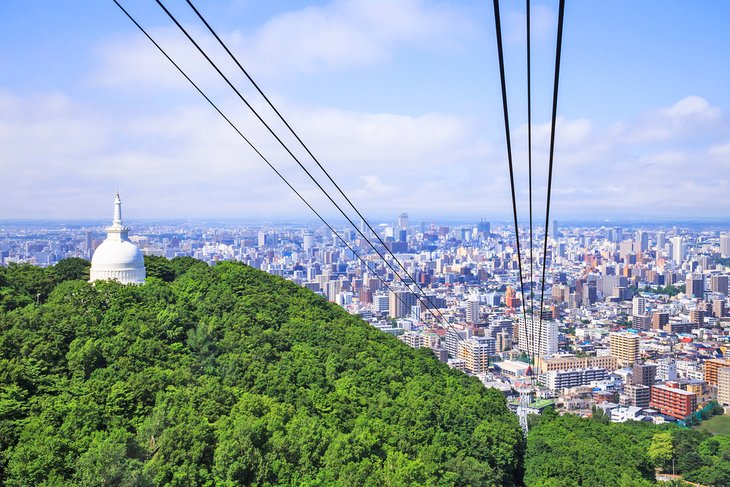
Towering high above Sapporo, the 531-meter-tall Mount Moiwa (Moiwa-yama) is the most visited of the many hills surrounding the city due largely to the ease with which its summit can be reached. While a popular destination for walkers, by far the most-frequented option is to take the aerial tramway, Mount Moiwa Ropeway, most of the way up before transferring to a cable car that takes only minutes to reach the summit's Upper Station. Here, you'll not only be treated to great views over the city (day or night) from the station's observation deck, you can also stop at its on-site restaurant or enjoy a show at its planetarium. Come winter, the Mount Moiwa Ski Resort lures winter sports enthusiasts from far and wide for its many fine slopes easily accessible from Sapporo's city center. Another hill of interest is Hitsuji-ga-oka (the hill of sheep) located to the southeast of Sapporo and also offering beautiful views over the city.
Official site: www.sapporo-dc.co.jp/eng/moiwa/
4 Jozankei Onsen Hot Spring
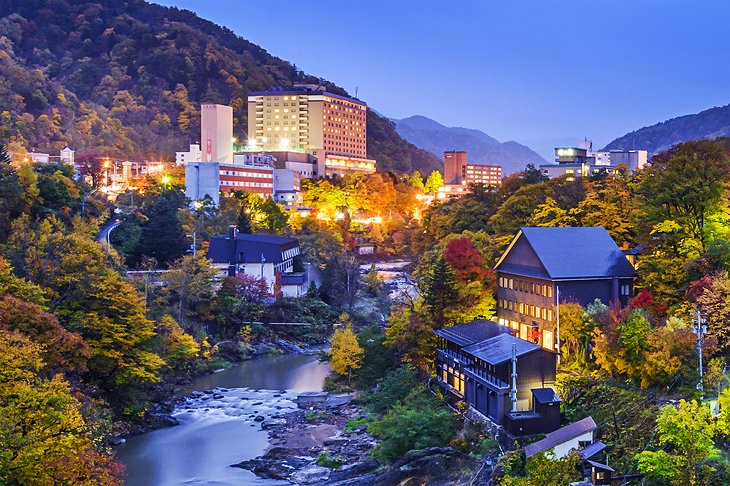
Less than an hour's drive from Sapporo is the spectacular Jozankei Onsen Hot Springs, an excursion that is well worth the time, especially if it can be combined with a stopover at one of the area's many fine spa hotels. Tucked away in a scenic valley with mountains adding to the scenery, the mineral waters of these famous hot springs have attracted many visitors from Sapporo and beyond (up to two and a half million per year) since 1866, all drawn by the curative and restorative qualities of its sodium chloride-rich waters. All told, Jozankei Onsen boasts some 56 hot springs pouring out an estimated 8,600 liters of water per minute at temperatures between 60 and 80°C, much of it now easily accessed thanks to the many spas and resorts that have sprung up here. Afterwards, be sure to explore the area's many scenic walking trails, taking in such beauty spots as the Shiraito-no-taki Waterfall, the Nishikibashi Bridge, and the crag of Futami-Iwa.
Address: Minami Ward, Sapporo, 061-2302
5 Maruyama-koen Park
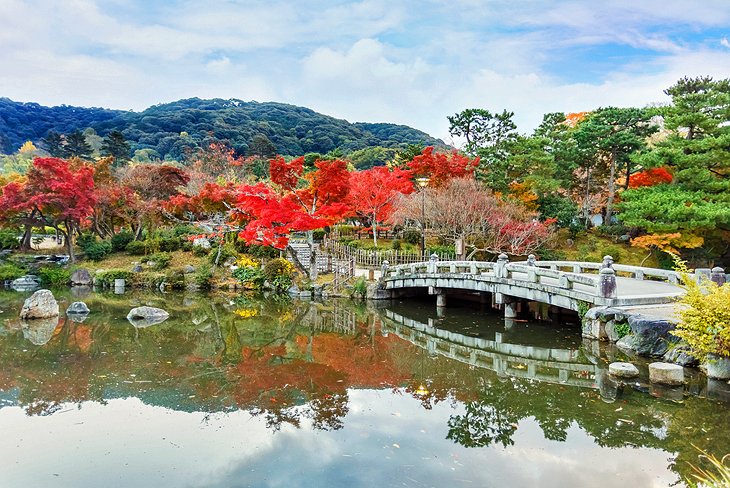
On the west side of Sapporo is Maruyama-koen Park, a multipurpose natural area popular with visitors year round. In spring, the park's 226-meter-high hill comes alive with the stunningly beautiful blooms of its more than 1,700 wild cherry trees, while in fall it's the turn of the many maple trees to show off as their leaves change into a cavalcade of reds and golds (it's also popular among birdwatchers). Winter, too, is not without its own beauty, when heavy snowfalls carpet the park, turning it into a playground for winter sports enthusiasts. At this time of year, the focal point here is the nearby Okurayama Ski Jump, built for the 1972 Winter Olympics and still regularly used to host ski competitions, as well as the Ōkurayama Crystal House, an interesting museum about winter sports. The park also boasts a small zoo, the Maruyama Zoo, with a variety of native and exotic animals.
6 Shikotsu-Tōya National Park
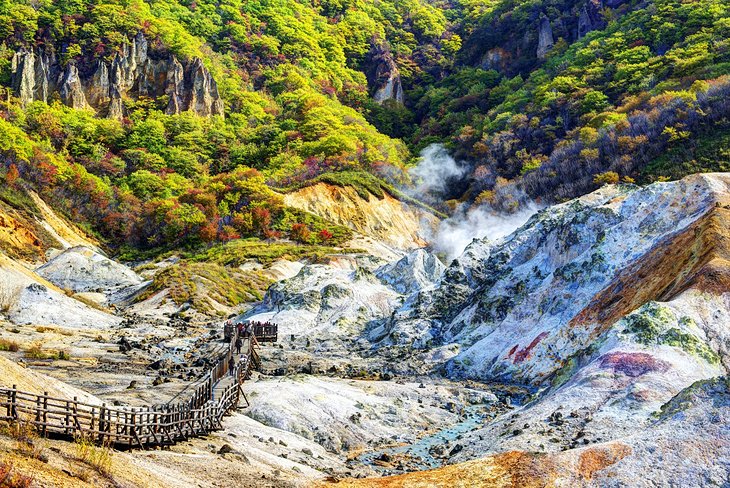
The Shikotsu-Tōya National Park near Sapporo contains in its three separate parts a wide range of beautiful volcanic landscapes, along with many crater lakes and hot springs. The largest section of the National Park lies at the very gates of Sapporo, making it an ideal day trip just an hour's bus ride away. A highlight is the 1,893-meter-tall Yotei, an extinct volcano that towers above the town of Kutchan, which serves as a good base for those wanting to make the four-hour climb to the three summit craters known as the Father, Mother, and Little Cauldrons. Also worth seeing is theNakayama Pass and crystal clear Lake Toya, a circular lake so warm it can't freeze over even in the severest of winters (the lake also boasts a popular health resort, Toyako-onsen). Another highlight is Showa-Shinzan, a still-active volcano, which came into being only in 1945.
7 Moerenuma Park
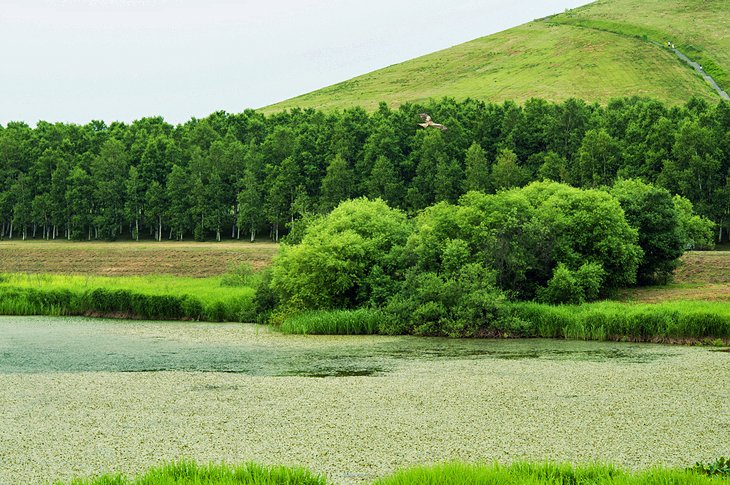
In the Higashi-ku suburb of Sapporo, the open spaces and sculptures of Moerenuma Park (Moerenuma Kōen) make for a fun diversion from the hustle and bustle of the city center. Opened in 2005 and 17 years in the making, this inspiring municipal park covers a vast area that is chock-a-block full of sculptures big and small, many of which also double as playground equipment large enough (and perhaps even meant for) adult visitors, along with the Forest of Cherry Trees with its 3,000 specimens that provide an incredible palette of color each spring. The most notable landmark is a huge glass pyramid known locally as Hidamari and housing an art gallery with a scale model of the park, workshops, a restaurant, and shop. Other highlights include the large stainless steel triangle known as the Tetra Mound and, dominating the site, the massive 62-meter-high Mount Moere with its views over Sapporo. Hot Tip: Try to plan your visit to coincide with one of the park's regular musical or theatrical events.
8 Sapporo TV Tower
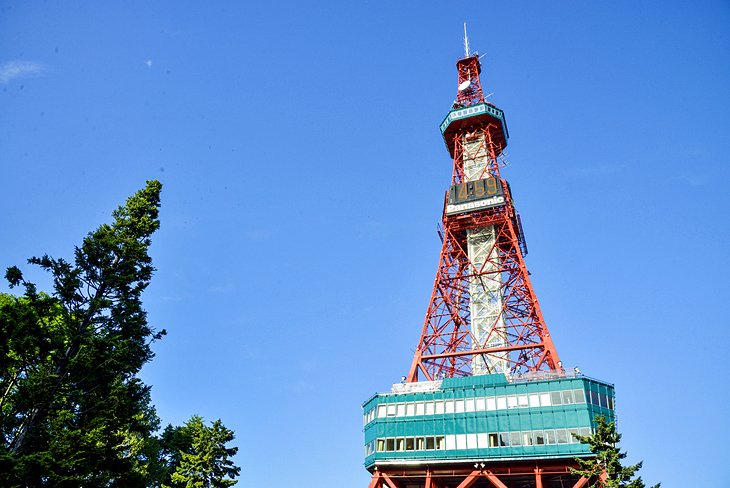
Built in 1957, the 147-meter-tall Sapporo TV Tower (Sapporo Terebi-tō) remains one of the city's most visited landmarks. Easily accessible from Odori Avenue Park, the tower offers superb views over Sapporo from its observation deck as well as from its restaurant. In addition to on-site stores, the tower also houses an interesting exhibit on the ground floor relating to the structure's history, along with access to Odori Avenue Park and a large underground shopping precinct. A highlight of the tower's exterior are the large digital clocks installed in 1961.
9 Former Hokkaidō Government Office

One of Sapporo's most obviously western influenced landmarks, the splendid Former Hokkaidō Government Office was built in 1873 to house the offices of the predecessor government that once watched over the island's affairs. Later extensively restored after a devastating fire, it now offers exhibition space and serves as a tourist center for the city and is well worth a visit for both its interior décor and its bright red-brick exterior. Impressive in size, the structure includes some two-and-a-half million bricks sourced locally and houses a collection of important paintings and other artworks, along with furniture and displays dealing with the building's important place in the history of the region. Afterwards, be sure to visit the splendid gardens and pond, especially when in use as a venue for musical and theatrical events.
Address: 6 Chome Kita 3 Jonishi, Chuo Ward, Sapporo, Hokkaido Prefecture 060-0003
10 Sapporo Clock Tower
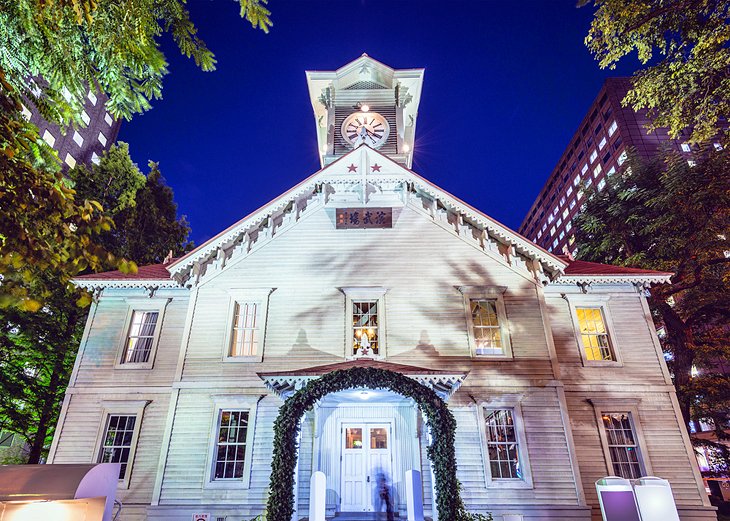
Another of Sapporo's surviving western-influenced structures is the city's famous Clock Tower (Sapporo Tokeidai). Built of wood and closely resembling the kind of colonial-style building common to many US small towns (a fact owed in part to the Americans involved in the planning of the city), the Clock Tower is a must-see on any visit to Sapporo. In addition to the still-functioning and chiming clock, other highlights include an interesting museum detailing the history of the region with a particular focus on farming. The facility is also used frequently for musical and theatrical productions, as well as community events and workshops.
Address: 2-1-1 Kita 1 Jonishi, Chuo Ward, Sapporo, Hokkaido Prefecture 060-0001
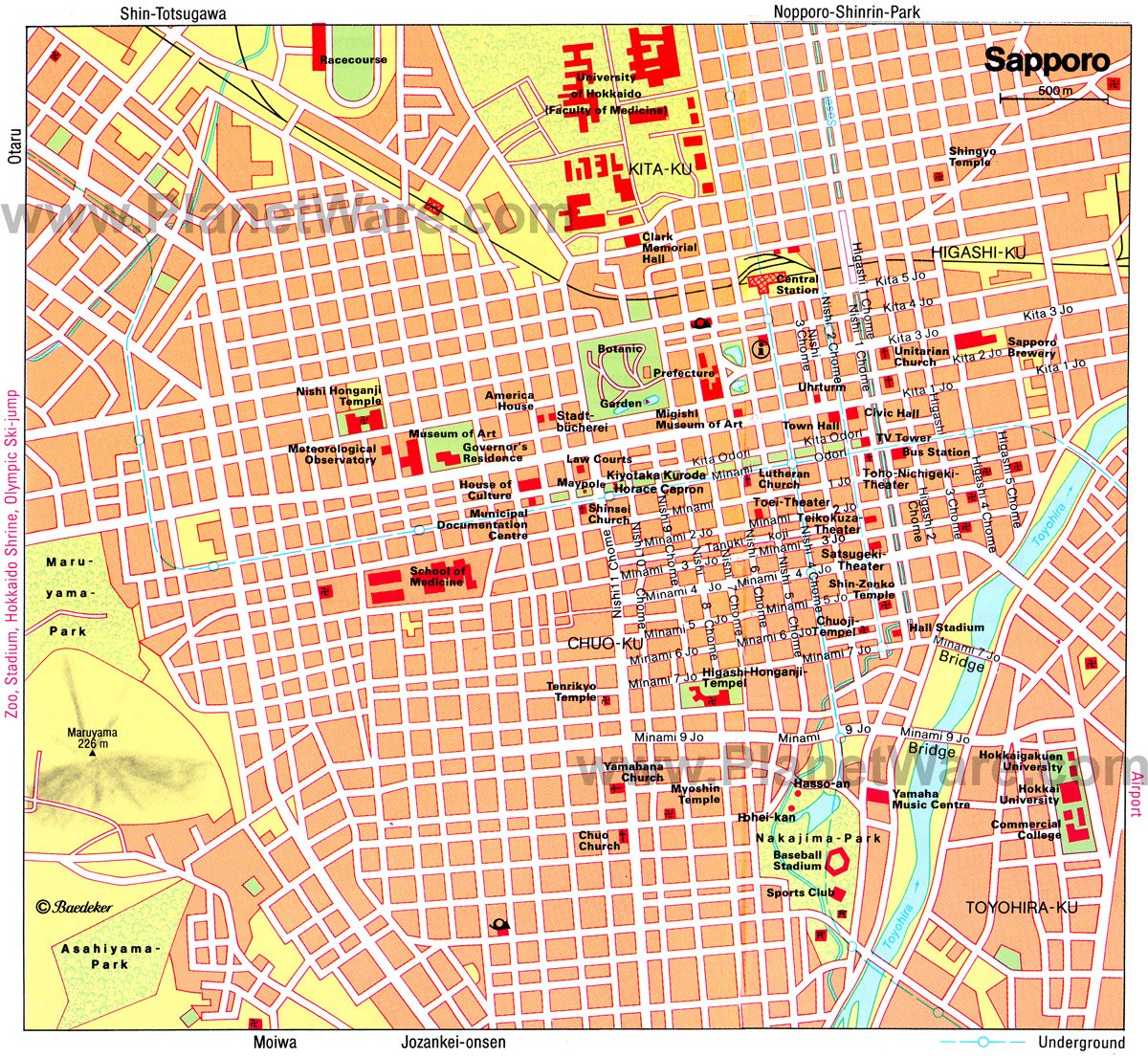
Sapporo Map - Attractions
No comments:
Post a Comment